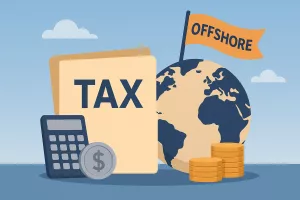In financial markets, especially in currency exchange, bond trading, and derivatives, the concepts of forward rates and spot rates are fundamental. These terms are crucial for anyone involved in trading, investing, or hedging, as they directly impact decision-making. Although both relate to the pricing of assets or currencies, they represent different points in time and serve distinct purposes. This article dives deep into the differences between forward rates and spot rates, explaining their functions, uses, and how they impact financial decisions. What is a Spot Rate? A spot rate is the current price at which an asset, currency, or commodity can be bought or sold for immediate delivery. In simpler terms, the spot rate is the price at which a transaction can be settled “on the spot.” Spot rates are influenced by market supply and demand dynamics and fluctuate throughout the trading day.
Characteristics of Spot Rates
- Immediate Settlement: Spot rates are used for transactions that are settled almost immediately, typically within two business days in the case of currency exchanges (known as T+2 settlement).
- Market-Driven: Spot rates reflect real-time market conditions, including supply, demand, interest rates, economic data, and geopolitical events.
- Liquidity and Volatility: Spot rates are often more volatile because they respond instantaneously to market news and investor sentiment.
Common Uses of Spot Rates
Spot rates are most commonly used in:
- Currency Exchange: Travelers or businesses needing to exchange currencies for immediate use rely on spot rates.
- Commodity Trading: Markets for commodities like oil, gold, or wheat use spot rates for immediate delivery of the goods.
- Debt Instruments: Spot rates are crucial for pricing short-term bonds and for comparing yields on different maturities.
Example of a Spot Rate Transaction
Imagine you are traveling to Europe and want to exchange US dollars for euros. The bank quotes you a spot rate of 1.10, meaning $1.10 equals €1. You agree to the transaction, and the bank settles it immediately, giving you euros in exchange for your dollars at the quoted rate. This transaction reflects the spot rate.
Factors Influencing Spot Rates
Spot rates can be influenced by a multitude of factors:
- Interest Rates: Central bank policies directly impact spot rates through interest rate decisions. Higher interest rates typically attract foreign investors looking for higher returns, thus increasing demand for that currency.
- Economic Indicators: Data releases such as GDP growth, employment numbers, and inflation statistics can sway spot rates as they reflect the economic health of a country.
- Political Stability: Countries with stable political environments often see stronger currencies as they are perceived as safer investments.
- Speculation: Traders and speculators can influence spot rates through their actions in the market, particularly in times of high volatility.
What is a Forward Rate?
A forward rate, on the other hand, is a price agreed upon today for a transaction that will take place at a future date. Forward rates are typically used in contracts where parties want to lock in an exchange rate, interest rate, or commodity price for a later date, thus hedging against future price volatility.
Characteristics of Forward Rates
- Future Settlement: Forward rates apply to transactions that will be settled at a predetermined date in the future, such as one, three, or six months from now.
- Calculated Based on Spot Rate and Interest Differentials: Forward rates are derived from the spot rate adjusted for the interest rate differential between two currencies (for currency forward contracts) or based on future expectations of prices.
- Hedging and Risk Management: Forward contracts are primarily used for hedging to protect against unfavorable price movements in the future.
Common Uses of Forward Rates
Forward rates are most commonly used in:
- Currency Forward Contracts: Businesses engaged in international trade use forward rates to lock in exchange rates for future transactions.
- Interest Rate Swaps: Investors use forward rates to manage interest rate risk by locking in future interest rates.
- Commodity Contracts: Companies in industries like agriculture, energy, or mining use forward rates to hedge against future price fluctuations in raw materials.
Example of a Forward Rate Transaction
Suppose a US-based company expects to receive €1 million in six months from a European client. The company fears that the euro might depreciate against the dollar, reducing the value of its future earnings. To mitigate this risk, the company enters into a forward contract with a bank, agreeing to exchange €1 million for $1.08 million at the forward rate. Regardless of where the exchange rate moves in the next six months, the company is guaranteed to receive $1.08 million when the transaction occurs.
Calculating Forward Rates
The calculation of forward rates involves several factors, especially in currency markets. The most common formula used is:
[ text{Forward Rate} = text{Spot Rate} times frac{(1 + text{Domestic Interest Rate})}{(1 + text{Foreign Interest Rate})} ]
For example, if the spot rate for USD/EUR is 1.10, the US interest rate is 2%, and the European interest rate is 1%, the forward rate for one year would be:
[ text{Forward Rate} = 1.10 times frac{(1 + 0.02)}{(1 + 0.01)} approx 1.11 ]
In this example, the forward rate for the USD/EUR pair would be approximately 1.11, indicating that in one year, $1.11 will be needed to purchase €1 if the current interest rate environment remains constant.
Forward Rates in Practice
- Corporate Strategy: A multinational corporation may use forward rates to hedge currency exposures arising from overseas operations, ensuring that fluctuations in exchange rates do not adversely affect their financial statements.
- Investment Portfolios: Fund managers might employ forward contracts to hedge against potential interest rate changes that could impact bond portfolios.
- Commodity Markets: Agricultural firms often use forward contracts to lock in prices for crops before harvest, protecting against the risk of price drops.
Key Differences Between Spot Rates and Forward Rates
While both spot rates and forward rates are essential in financial markets, they differ in several important ways:
- Time Frame
- Spot Rate: Reflects the current price for immediate settlement.
- Forward Rate: Reflects the agreed-upon price for a future settlement.
- Purpose and Use
- Spot Rate: Typically used for immediate transactions, such as currency exchanges or commodity trades, and reflects real-time market conditions.
- Forward Rate: Primarily used for hedging and risk management, allowing parties to lock in prices or rates to protect against future volatility.
- Price Determination
- Spot Rate: Determined purely by current supply and demand conditions in the market.
- Forward Rate: Calculated using the spot rate adjusted by interest rate differentials (for currencies) or based on expected future prices.
- Market Participants
- Spot Rate: Commonly used by individuals and businesses needing to make immediate purchases or exchanges.
- Forward Rate: Commonly used by institutional investors, corporations, and traders involved in hedging or long-term planning.
Why the Difference Matters
Understanding the difference between spot rates and forward rates is crucial for businesses and investors, as it directly influences their strategies for hedging, trading, and managing risk. Some reasons why this distinction is important include:
- Risk Management: Forward rates allow businesses to lock in prices and rates, protecting against adverse market movements.
- Investment Strategies: Traders and investors use forward rates to speculate on future price movements or manage exposure in currency and interest rate markets.
- Operational Planning: Companies involved in international trade rely on forward rates to budget and forecast their financial outcomes accurately.
Practical Tips for Using Spot and Forward Rates
- Assess Your Needs: Determine whether you need to hedge against future risks or if you require immediate transactions. This will guide whether you should use spot or forward rates.
- Stay Informed: Keep an eye on economic indicators, interest rate announcements, and geopolitical events that might impact currency markets.
- Consult Experts: For complex transactions or large exposures, consider consulting with financial advisors or currency specialists to ensure you are making the best decision.
- Monitor Trends: Use historical data and trend analysis to anticipate market movements and make informed decisions regarding forward contracts.
- Diversify Hedging Strategies: Combine the use of spot and forward rates with other hedging instruments like options and futures to optimize risk management.
Common Mistakes and How to Avoid Them
- Ignoring Transaction Costs: Both spot and forward transactions can incur fees. Ensure you account for these when calculating potential gains or losses.
- Over-Hedging: Hedging too much can limit potential upside in favorable market conditions. Careful analysis and balanced hedging strategies are key.
- Underestimating Volatility: Markets can be unpredictable. Prepare for potential volatility by setting aside reserves or establishing stop-loss orders.
Real-World Case Studies
Case Study 1: A Tech Company Hedging Currency Risk
A US-based tech company with significant sales in Europe faced currency risk due to fluctuations in the EUR/USD exchange rate. To mitigate this, the company entered into forward contracts to lock in exchange rates for future sales revenue. This strategy allowed them to stabilize their earnings forecasts and focus on core business activities without worrying about exchange rate volatility.
Case Study 2: An Agricultural Firm Using Forward Contracts
A large agricultural firm anticipated a bumper wheat crop but feared a price drop due to increased supply. The firm entered into forward contracts to sell a portion of its expected harvest at a predetermined price, ensuring stable revenue despite market fluctuations.
By understanding and applying the principles of spot and forward rates, businesses and investors can navigate the complexities of financial markets, optimize their strategies, and safeguard against unpredictable market shifts. These tools, when used wisely, offer a robust framework for managing financial risk and achieving strategic financial objectives.




